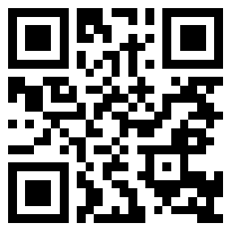大使疫情手记 (3) —— 我们当下的后碳时代

作者:Geoff Raby
中文:罗曼
转自朱雀艺术
前澳大利亚驻华大使、艺术收藏家、经济学家、专栏作家 Dr Geoff Raby AO 原计划于二月底返回北京,后因疫情爆发滞留悉尼。朱雀艺术特别开设【号外】专栏,连载大使的疫情手记。今日连载至第3篇。
大使疫情手记
我们当下的后碳时代
突然之间,一个关乎我们存亡的威胁被另一个更迫在眉睫的灾难所取代。就在几周前,在疫情尚未登陆澳大利亚之际,我们所愈发焦虑的问题是气候变化、全球变暖对生活方式的影响,以及我们将如何改变和适应 。我们从未经历过“后碳” (post-carbon,注1)生活。
多亏这场新冠疫情,我们眼下正生活在我们刚刚开始设想的低碳未来中。天空一片寂静,全球各大航空公司纷纷停飞。如今,连一架大型客机和悉尼机场就降落谈判都算得上新鲜事了。今天早上,我还在锻炼途中停下来盯着一架经过的飞机看了一会。

以前,每天早晨6:20时,都有一班飞往悉尼机场的飞机掠过达令赫斯特的上空。每个崭新的日子都始于计算机控制的规范。到几周前为止,我在过去十年的生活中,平均每个月都要乘坐2到3次国际航班,最忙的时候每周可能要3次,全部都是飞往中国。
有时我也会担心自己的碳足迹,但是我们需要工作、需要支付账单,这就是我们的生活。如今,那些我们所习以为常的正在变得愈发罕见。

今天,当我在秋日的朝阳下漫步于拉什卡特尔斯湾时,我似乎瞥见了后碳未来。公园里再次聚满了人,或散步,或疾走,或跑步,或独自锻炼,或结伴而行。许多身型健美的人在做着举重、俯卧撑和仰卧起坐。当然,最开心的自然是狗狗,它们一定无法相信自己竟然拥有了那么多同伴。在它们的世界里没有隔离。
作为公共空间的公园最早兴建于19世纪末的维多利亚时期,它们是工人和市民的休闲场所。公园不仅是锻炼和放松的主要场所,也是尤为重要的社交空间。

维多利亚时期的公园
人们不再穿梭于城中见面聚会,更不用说城际或跨国旅行了。除非必须事务,他们时刻待在家里。新冠疫情让我们想起了公园的价值以及公园在生活中的重要作用。
或许我们会在家重新发现自己的生活,或许终于和邻居认识了,并学会更好地使用低碳环保的数字方式交流。我们的后碳未来看起来可能正如我们当下的疫情生活。

注1: 后碳,相较于低碳而言,是指几乎完全脱离石油和其他化石燃料的生活方式。在后碳时代,工业生产、交通、发电、社会福利等活动将不再依赖那些导致二氧化碳排放的活动或设施。
Geoff Raby’s Pandemic Journal
Our post-carbon present
Suddenly one existential threat to our survival has been replaced by another, more immediate and sinister one. It is only a few weeks ago, before the virus launched itself on us, that we were becoming increasingly anxious about climate change and the threat that global warming posed to our lifestyles and how we will need to change and adapt. We had no experience of a post-carbon lifestyle.
Thanks to COVID-19, we are now living in the low-carbon future we were only just beginning to imagine. The skies have fallen silent. Airlines have grounded their fleets around the world. A big jet aircraft negotiating a landing at Sydney airport is a novelty now. I stopped my exercise walking this morning to stare at one.
Previously, each morning, a 6:20am flight would head towards Sydney airport low over Darlinghurst. A new day was starting with computer-controlled regulatory. Until a few weeks ago, for the past ten years, my life involved an average of two to three international flights per month, on occasions, when business was running hot, it could be three per week, all from China.
Occasionally, I would worry about my carbon footprint, but the bills needed paying and that was the life we were living. Today, the normal is increasingly looking to be abnormal.
Walking through Rushcutters Bay this morning in the autumn sunshine, I had a glimpse of what a post-carbon future might look like. The park was again full of people strolling, power walking, running, exercising alone or in small groups. Many beautiful bodies were straining lifting weights, pulling on muscle stretching elastic bands, doing push ups and sits up. And of course, the dogs couldn’t believe their great good fortune having so many others with which to play. No isolation required there.
Public parks as pleasure gardens began in the late nineteenth century as part of the great Victorian enterprise to provide public space for industrial workers and urban dwellers. They were vital places of exercise and relaxation. They were especially important for socialising.
People did not travel all over the cities, let alone the nation, nor god forbid, the world, to meet and gather. They stayed at home, as much as for economic necessity as convenience. COVID-19 is reminding us of the value of public parks and the central place they could play in our lives. People may re-discover life at home, may finally get to meet their neighbours, and learn to communicate more digitally, which is largely low-carbon friendly.
Our post-carbon future may look something like our COVID-19 present.







 +61
+61 +86
+86 +886
+886 +852
+852 +853
+853 +64
+64


